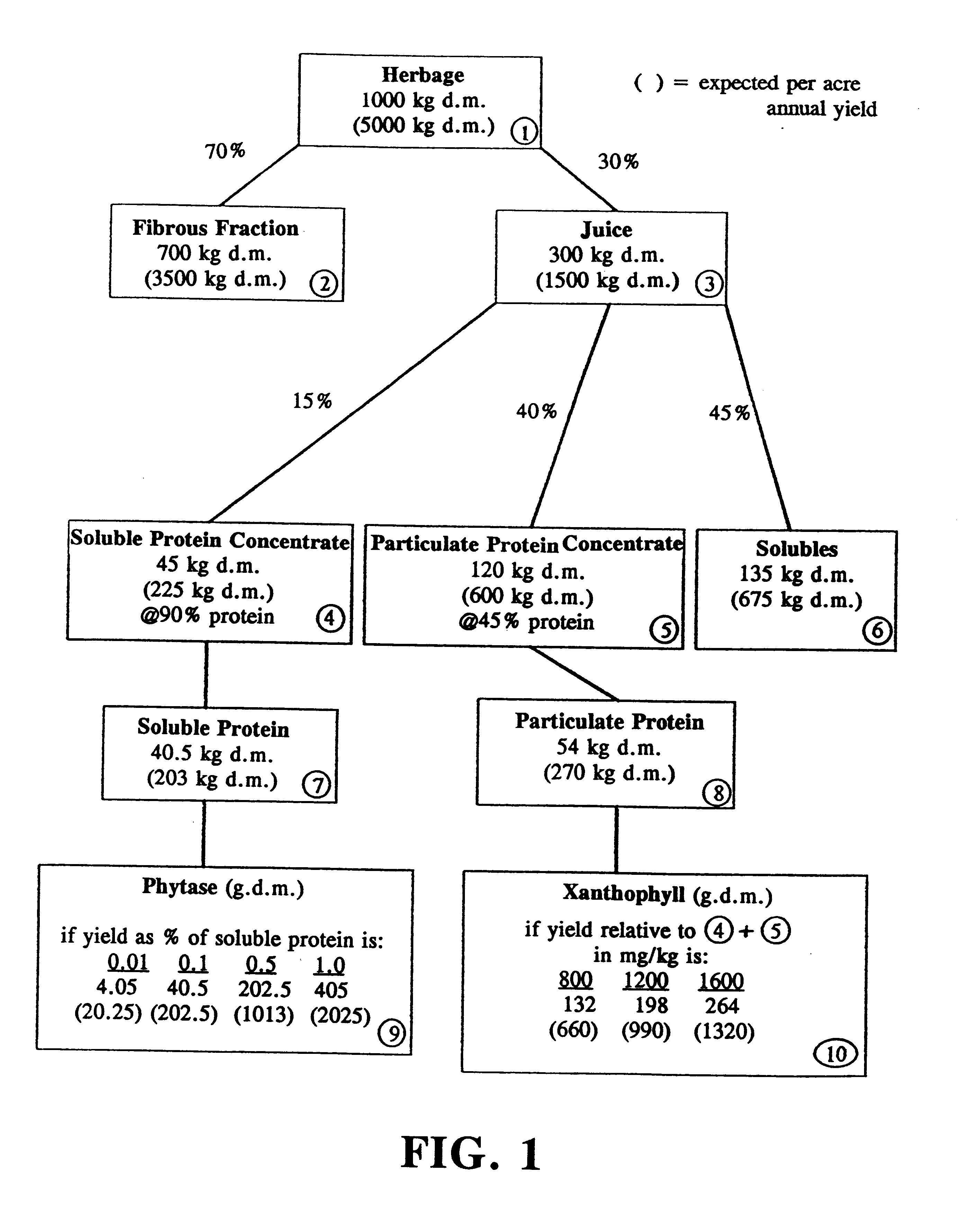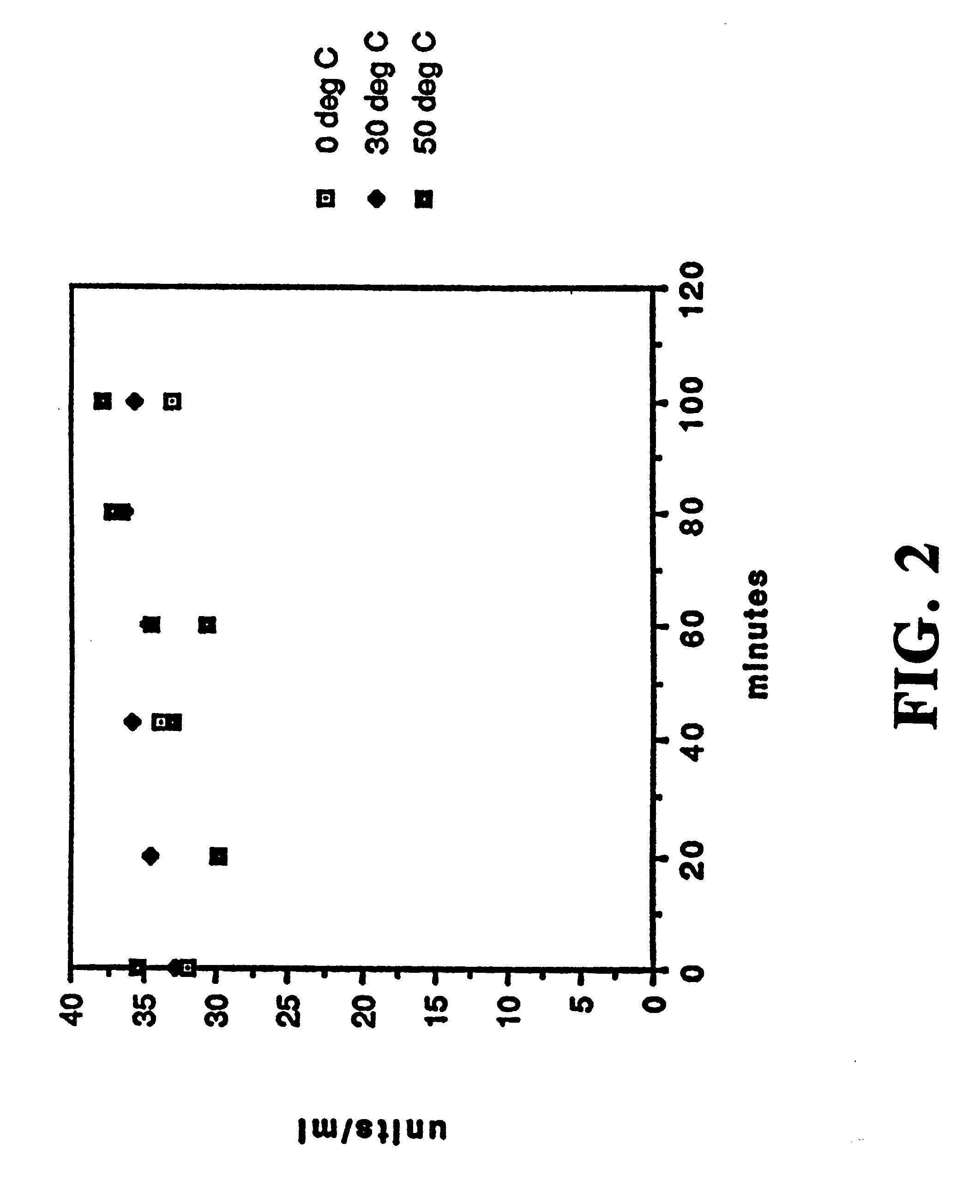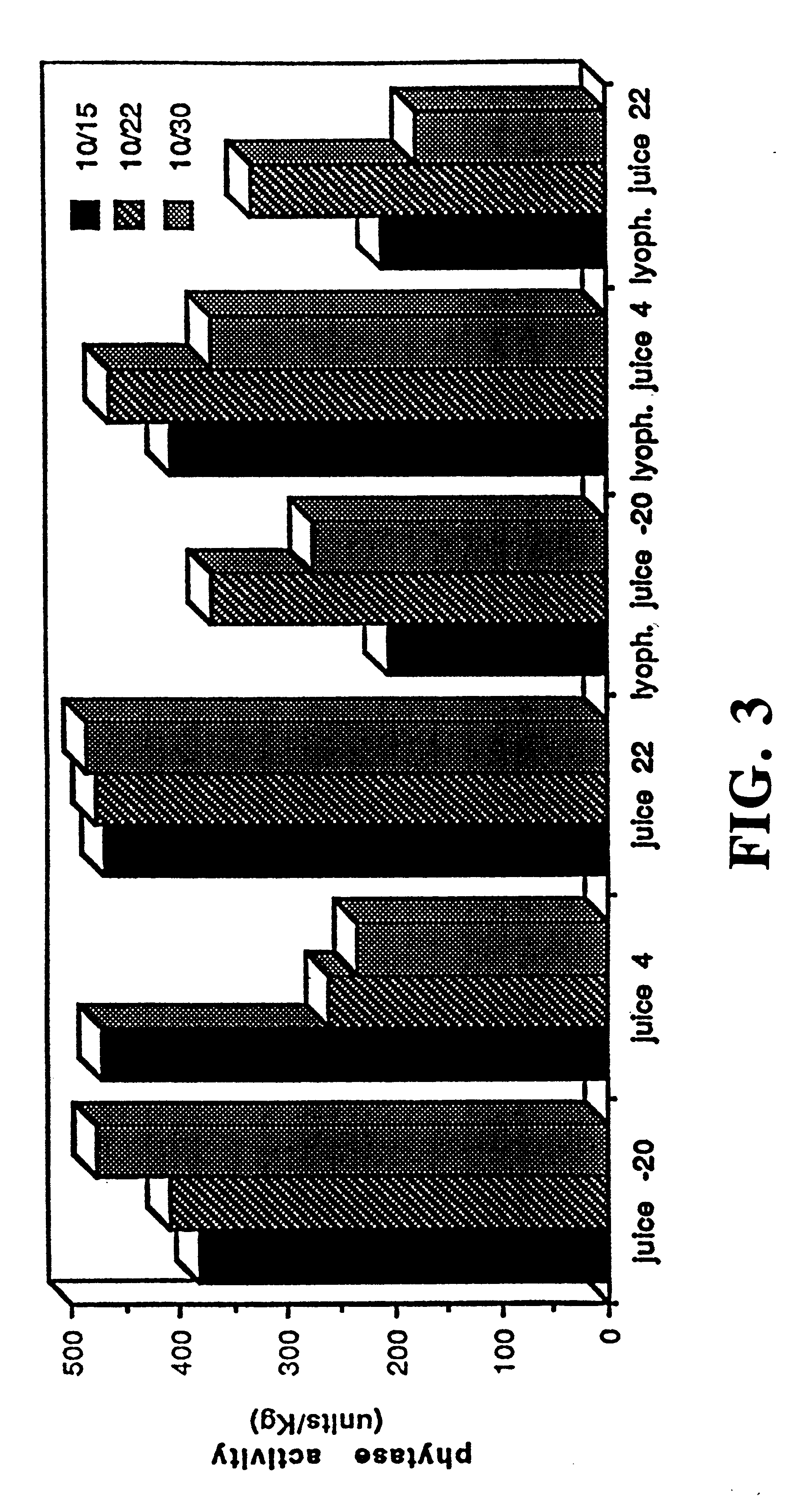Animal feed compositions containing phytase derived from transgenic alfalfa and methods of use thereof
a technology of phytase and animal feed, which is applied in the field of animal feed compositions containing phytase derived from transgenic alfalfa, can solve the problems of increasing phosphorous loading, increasing environmental problems, and affecting the production of phytate,
- Summary
- Abstract
- Description
- Claims
- Application Information
AI Technical Summary
Problems solved by technology
Method used
Image
Examples
example 1
Expected Yields
This Example reports the expected yields of various alfalfa juice fractions, including phytase and xanthophylls, isolatable from transgenic alfalfa which constituitively expresses exogenous phytase originating from A. niger. Freshly expressed alfalfa juice was analyzed no less than 140 times on 40 days spanning a single growing season in Dane County, Wisconsin, extending from mid-June to mid-October. The results are presented in FIG. 1.
Each box of FIG. 1 includes two designations. The first designation is the amount of the respective fraction based upon 1000 kg of harvested dry matter. The second designation is the amount of the respective fraction based upon an expected per acre annual yield. This designation is placed in parentheses ( ). This Example tabulates the complete isolation of soluble and particulate protein, phytase, and xanthophylls. Complete isolation of the individual components present in the transgenic alfalfa, as illustrated here, is not necessary to...
example 2
Non-ruminant Feed Supplement
Using the above average yields, the following conclusions can be drawn regarding the ability to supplement non-ruminant animal feeds with transgenic alfalfa which expresses exogenous phytase activity.
First, regarding phytase activity and the requirements of poultry and swine, the following requirements are generally accepted in the animal nutrition art:
1 unit phytase 1 .mu.mole PO.sub.4 released / min@pH 5.5 and 37.degree. C.
Pure phytase=100 to 140 units per mg dry matter
Poultry require a minimum of 300 to 500 units phytase per kg ration, which corresponds to approximately 3.3 mg phytase per kg of ration, or 3.3 g phytase per metric ton of ration.
Swine require approximately 1000 to 1200 units phytase per kg ration, which corresponds to approximately 9.2 mg phytase per kg of ration, or 9.2 g phytase per metric ton of ration.
For this Example, poultry were considered to require 29 mg xanthophyll per kg ration, or 29 g xanthophyll per metric ton ration. Swine d...
example 3
Storage Stability when Formulated into Poultry Feed
Both lyophilized and frozen whole alfalfa juice were used to supplement a standard poultry diet such that phytase activity of the feed was 400 units / Kg (1 unit=quantity of enzyme required to liberate 1 .mu.mole inorganic phosphorus per minute from an excess of sodium phytate at 37.degree. C., pH 5.5). Portions of treated feed were stored at 22.degree. C., 4.degree. C., and -20.degree. C. After 1, 2 and 3 weeks of storage at these temperatures, representative samples were taken from each feed portion and assayed for phytase activity. The results of this Example are depicted in FIG. 3. As shown in FIG. 3, results for the feed portions supplemented with frozen alfalfa juice from transgenic alfalfa are designated "juice"; results for the feed portions supplemented with lyophilized juice from transgenic alfalfa are designated "lyoph. juice". The temperature under which each sample was stored is designated along the X-axis, and the Y-axis...
PUM
| Property | Measurement | Unit |
|---|---|---|
| Percent by mass | aaaaa | aaaaa |
| Percent by mass | aaaaa | aaaaa |
| Fraction | aaaaa | aaaaa |
Abstract
Description
Claims
Application Information
 Login to View More
Login to View More - R&D
- Intellectual Property
- Life Sciences
- Materials
- Tech Scout
- Unparalleled Data Quality
- Higher Quality Content
- 60% Fewer Hallucinations
Browse by: Latest US Patents, China's latest patents, Technical Efficacy Thesaurus, Application Domain, Technology Topic, Popular Technical Reports.
© 2025 PatSnap. All rights reserved.Legal|Privacy policy|Modern Slavery Act Transparency Statement|Sitemap|About US| Contact US: help@patsnap.com



